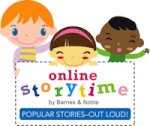The Loathsome Dragon
by Kim Kahng & David Wiesner
Houghton Mifflin Harcourt, 2005
Summary: In this fairy tale, the evil stepmother/queen turns the Princess Margaret into a loathsome dragon. Only her brother Richard can save her (and the kingdom), if he can see beyond her appearance.
Lesson: I read this book when I wanted to talk to the students about the Dewey Decimal system and where to find fairy tales. We also talked about why something that was fictional was found in the non-fiction area of the library. We listed popular fairy tales and folk
Level: 1st-4th grade




















